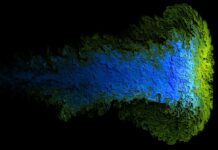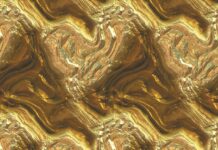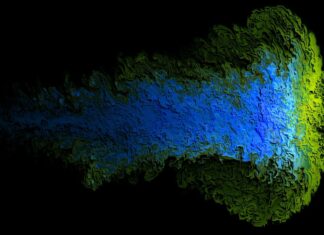Resin Printing, Resin Printing, Resin Printing – a revolutionary technology that has transformed the landscape of 3D printing, offering unparalleled precision and intricate detailing in the creation of three-dimensional objects. Also known as stereolithography (SLA) or digital light processing (DLP) printing, Resin Printing utilizes liquid resin materials that solidify layer by layer, resulting in highly detailed and finely crafted objects. As we delve into the intricacies of Resin Printing, it becomes evident that this technique has gained widespread popularity in various industries, ranging from prototyping and manufacturing to artistic and medical applications.
At the core of Resin Printing, Resin Printing, Resin Printing is the utilization of photopolymer resin as the primary material for creating three-dimensional objects. Unlike traditional filament-based 3D printing, where layers of thermoplastic material are deposited to build up a structure, Resin Printing relies on the precise curing of liquid resin with the application of light. This process is initiated by a light source, typically a laser or a projector, which selectively solidifies the liquid resin layer by layer, conforming to the digital model of the object being printed.
The exceptional precision and resolution achieved with Resin Printing make it particularly well-suited for applications that demand intricate detailing and high-quality surface finishes. The ability to produce objects with fine features and smooth surfaces distinguishes Resin Printing from other 3D printing technologies. This level of detail is particularly advantageous in industries such as jewelry design, dental prosthetics, and model making, where intricate and precise replication is paramount.
One of the key advantages of Resin Printing, Resin Printing, Resin Printing lies in its ability to create objects with complex geometries and intricate internal structures. Traditional 3D printing methods may struggle with overhangs and intricate designs, often requiring additional support structures that must be removed after printing. In contrast, Resin Printing excels at producing objects with overhangs and intricate features, as the liquid resin is supported by the previously solidified layers during the printing process. This capability expands the design possibilities for engineers, designers, and artists, allowing them to explore more intricate and sophisticated shapes.
The versatility of Resin Printing extends to the wide range of materials available for use in the printing process. Photopolymer resins come in various formulations, each tailored to specific applications. Standard resins provide a balance of strength and flexibility, suitable for a broad range of applications. Meanwhile, specialized resins with properties like transparency, flexibility, or heat resistance cater to specific requirements. This diversity in material options enhances the adaptability of Resin Printing to different industries and applications.
In the realm of prototyping and product development, Resin Printing has emerged as a game-changer. The high level of detail and accuracy achievable with this technology allows designers and engineers to create precise prototypes that closely resemble the final product. This is particularly valuable in industries such as automotive and consumer electronics, where prototyping is a critical phase in the product development lifecycle. The ability to iterate quickly and accurately during the design phase accelerates the overall product development process.
Resin Printing’s impact is not limited to prototyping; it has found a significant role in the field of dentistry. Dental labs and practitioners utilize Resin Printing to manufacture highly detailed and accurate dental models, crowns, bridges, and other prosthetic devices. The ability to produce dental implants with precision and accuracy contributes to improved patient outcomes and the overall efficiency of dental procedures. This application of Resin Printing underscores its potential in the medical field, where customized and patient-specific solutions are increasingly in demand.
Artists and sculptors have also embraced Resin Printing for its ability to faithfully reproduce intricate details and achieve smooth surface finishes. This technology enables artists to bring their digital designs to life with a level of precision that was previously challenging to attain. Sculptures, figurines, and intricate art pieces benefit from the high-resolution capabilities of Resin Printing, offering artists new avenues for creative expression.
Despite its numerous advantages, Resin Printing does come with some considerations and challenges. The liquid resin used in the process typically contains chemicals that may require careful handling. Users must be mindful of safety precautions, including proper ventilation and the use of personal protective equipment. Additionally, the post-processing steps after printing, such as the removal of support structures and the curing of the printed object, demand attention to detail and a certain level of expertise.
The cost of materials for Resin Printing can also be higher compared to traditional filament-based 3D printing. Photopolymer resins can be more expensive, and their shelf life may be limited. However, the trade-off is often justified by the superior quality and precision achievable with Resin Printing, especially in applications where detail and surface finish are critical.
In terms of equipment, Resin Printing requires a resin vat and a build platform. The resin vat holds the liquid resin, and the build platform is incrementally lowered as each layer is solidified. The precision of these components is crucial for the overall accuracy of the printed object. Regular maintenance and calibration are necessary to ensure consistent and reliable performance.
The post-processing steps for Resin Printing involve the removal of the printed object from the build platform, cleaning off excess resin, and curing the object using UV light. Additionally, support structures used during printing must be carefully removed, and the object may require additional curing time to achieve optimal mechanical properties. While these steps contribute to the overall finishing process, they require attention to detail to avoid damaging the delicate features of the printed object.
In conclusion, Resin Printing, Resin Printing, Resin Printing has ushered in a new era in 3D printing, offering unparalleled precision, intricate detailing, and versatile material options. Its applications span across industries, from prototyping and manufacturing to dentistry, art, and beyond. The ability to create objects with complex geometries and fine features positions Resin Printing as a powerful tool for designers, engineers, and artists seeking high-quality, detailed outputs. While it comes with considerations such as safety precautions and post-processing complexities, the advantages of Resin Printing in terms of accuracy and surface finish make it an invaluable technology in the realm of additive manufacturing. As this technology continues to evolve, its impact is likely to grow, influencing diverse fields and expanding the possibilities of what can be achieved in the realm of three-dimensional printing.






















